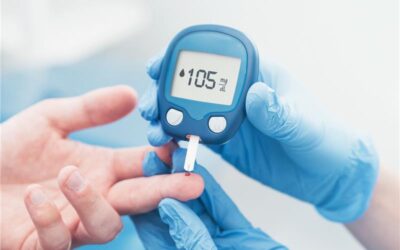Case Study
Monitoring Therapeutics for Rare Diseases with Metabolomics
Metabolomics presents a unique opportunity to develop a complete understanding of the metabolic imbalance before therapy and to appreciate a drug’s impact on metabolic pathways.
Metabolon’s untargeted metabolomics technology can be used to predict the effectiveness of a drug and monitor disease development. Therefore, metabolomics offers researchers an effective route to address some of the issues associated with discovering and monitoring therapeutics.
The Global Discovery Panel can be used to predict the effectiveness of a drug and monitor disease development. Therefore, metabolomics offers researchers an effective route to address some of the issues associated with discovering and monitoring therapeutics.

The Challenge: Combatting Rare Genetic Diseases
Researchers identified a new autosomal dominant genetic syndrome—Bachmann-Bupp Syndrome (BABS)—in a 3-year-old patient. BABS is an ultra-rare neurometabolic disorder associated with several clinical features, including global developmental delay and alopecia. It is caused by de novo mutations in the ornithine decarboxylase 1 (ODC1) gene that ultimately lead to its enhanced activity.1 ODC1 controls polyamine biosynthesis, which orchestrates fundamental physiological and cell developmental processes.
Eflornithine is an ornithine decarboxylase (ODC) inhibitor that has been previously approved to treat African sleeping sickness and has shown promise in clinical trials for pediatric neuroblastoma.2 To test eflornithine against the patient’s specific mutation, the researchers treated some of the patient’s skin cells with eflornithine and found that it reduced ODC activity in vitro. This suggested that repurposing eflornithine could therapeutically suppress the high ODC activity in the BABS patient.
Metabolon Insight: Evaluating Eflornithine as a Treatment for BABS
Metabolon’s untargeted metabolomics technology was used to analyze plasma samples. This allowed the research group to evaluate the patient’s metabolomic profile before and after treatment to assess eflornithine’s efficiency.
The Solution: Eflornithine Normalizes Polyamine-Related Metabolites
The research group collaborated with Metabolon to perform metabolomic analysis of plasma samples from the patient prior to and after initiating treatment with eflornithine. The metabolite levels of a reference cohort of 866 pediatric patients were converted to Z-scores and compared to the patient’s metabolomic profile. Out of the 915 metabolites identified in the patient before treatment, a total of 16 metabolites had values above the 97.5th percentile and 38 metabolites below the 2.5th percentile, with a robust difference in polyamine-related metabolites without any marked disruption of any other metabolic pathways on treatment.
Eflornithine treatment also stabilized the patient’s polyamine levels without disrupting other pathways. The initial elevation of N-acetylputrescine and acisoga, which were above the 97.5th percentile, decreased right after initiating therapy and remained reduced throughout the treatment, indicating that eflornithine treatment normalized the polyamine pathway. In addition to reducing ODC activity, eflornithine treatment also led to significant hair growth and remarkable improvement in neurological symptoms after 6 months of eflornithine treatment. The patient gained better posture and the capacity to feed herself. Post-treatment MRIs revealed normalization of her cerebral white matter, which is a sign that the drug might be spurring neurological improvements.
The Outcome: Eflornithine Can be Repurposed to Treat BABS
Global metabolomics offers a unique opportunity to develop a more complete understanding of the metabolic imbalance before therapy, to understand the drug’s impact on interconnected metabolic pathways, and to identify potential adverse effects. These findings may lead to earlier initiation of therapy in future BABS patients, thereby perhaps avoiding some of the neurological delays that have come to characterize the patient’s disease in the study. This work demonstrates that Metabolon’s untargeted metabolomics technology can be used to predict the effectiveness of a drug and monitor disease development. Therefore, metabolomics offers researchers an effective route to address some of the issues associated with drug therapeutics discovery and monitoring.
References
1. Rajasekaran S, Bupp CP, Leimanis-Laurens M, et al. Repurposing eflornithine to treat a patient with a rare ODC1 gain-of-function variant disease. Elife. 2021;10:e67097. Published 2021 Jul 20. doi:10.7554/eLife.67097
2. Bupp CP, Schultz CR, Uhl KL, Rajasekaran S, Bachmann AS. Novel de novo pathogenic variant in the ODC1 gene in a girl with developmental delay, alopecia, and dysmorphic features. Am J Med Genet A. 12 2018;176(12):2548-2553. doi:10.1002/ajmg.a.40523






